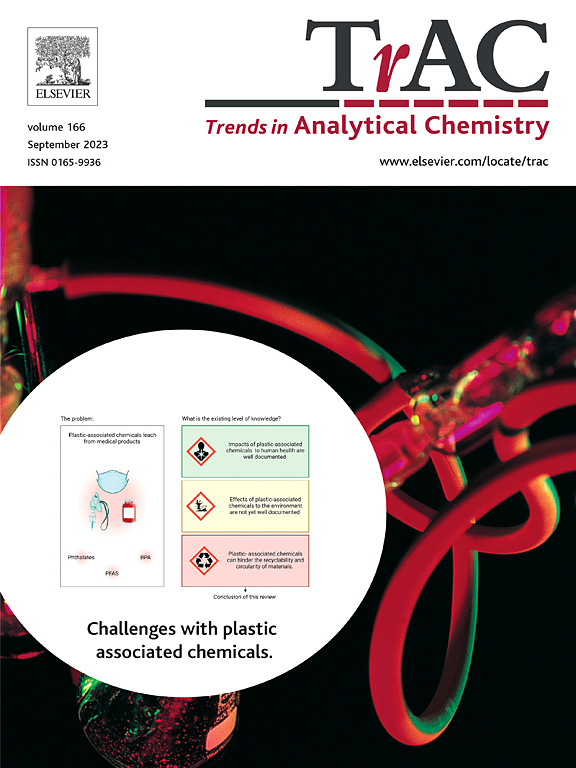用于非分离分析的分子识别聚合物微球和纳米颗粒:莫斯巴赫印记
IF 12
1区 化学
Q1 CHEMISTRY, ANALYTICAL
引用次数: 0
摘要
沉淀聚合法合成分子印迹聚合物微球是1999年在隆德首次报道的。这种合成方法由于其简单性引起了世界范围内分子印迹技术的极大兴趣。在材料合成可行性的初步论证之后,印迹聚合物微球被发现具有良好的胶体稳定性,可以在接近闪烁试验中用作抗体替代品。在接下来的几年里,其他类型的使用印迹聚合物微球的非分离分析开始发展。基于荧光测量的分子检测最终成为避免放射性示踪剂的首选方法。许多研究想法都是受到克劳斯·莫斯巴赫教授早期贡献的启发。这篇手稿提供了一个历史回顾的分子印迹聚合物微球和纳米颗粒设计的非分离分析。虽然主线是作者实验室到目前为止的研究演变,但也讨论了其他小组的重要贡献。本文章由计算机程序翻译,如有差异,请以英文原文为准。

Molecular recognition polymer microspheres and nanoparticles for nonseparation assays: the Mosbach imprint
Synthesis of molecularly imprinted polymer microspheres using precipitation polymerization was first reported in 1999 in Lund. The synthetic approach attracted great interest for molecular imprinters worldwide due to its simplicity. Following the initial demonstration of feasibility for material synthesis, imprinted polymer microspheres were found to exhibit good colloidal stability qualifying for use as antibody substitutes in a proximity scintillation assay. In the following years, other types of nonseparation assays using imprinted polymer microspheres started to be developed. Molecular detection based on fluorescence measurements eventually became the method of choice to avoid radioactive tracers. Many of the research ideas have been inspired by the earlier contributions from Professor Klaus Mosbach. This manuscript provides a historic review on molecularly imprinted polymer microspheres and nanoparticles designed for nonseparation assays. While the main thread is the research evolvement of the authors’ laboratory till the present time, important contributions from other groups are also discussed.
求助全文
通过发布文献求助,成功后即可免费获取论文全文。
去求助
来源期刊

Trends in Analytical Chemistry
化学-分析化学
CiteScore
20.00
自引率
4.60%
发文量
257
审稿时长
3.4 months
期刊介绍:
TrAC publishes succinct and critical overviews of recent advancements in analytical chemistry, designed to assist analytical chemists and other users of analytical techniques. These reviews offer excellent, up-to-date, and timely coverage of various topics within analytical chemistry. Encompassing areas such as analytical instrumentation, biomedical analysis, biomolecular analysis, biosensors, chemical analysis, chemometrics, clinical chemistry, drug discovery, environmental analysis and monitoring, food analysis, forensic science, laboratory automation, materials science, metabolomics, pesticide-residue analysis, pharmaceutical analysis, proteomics, surface science, and water analysis and monitoring, these critical reviews provide comprehensive insights for practitioners in the field.
 求助内容:
求助内容: 应助结果提醒方式:
应助结果提醒方式:


